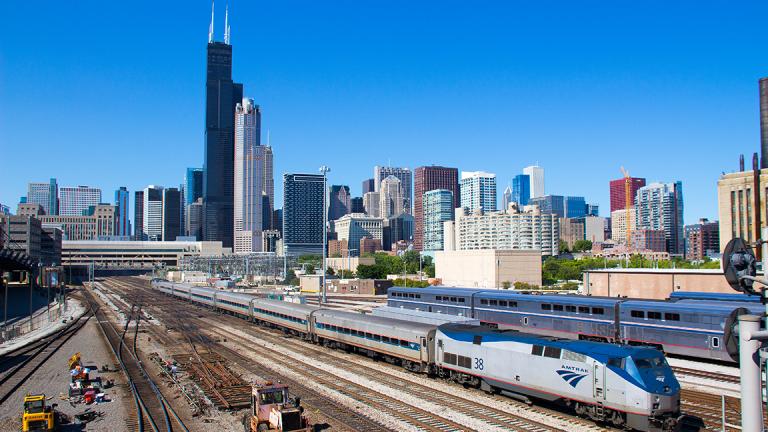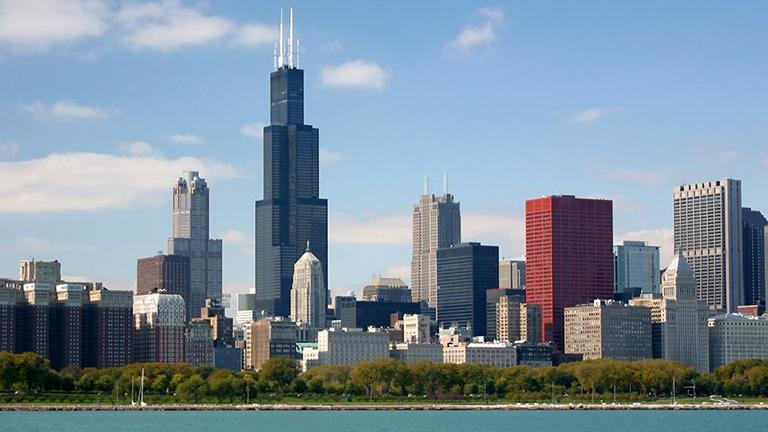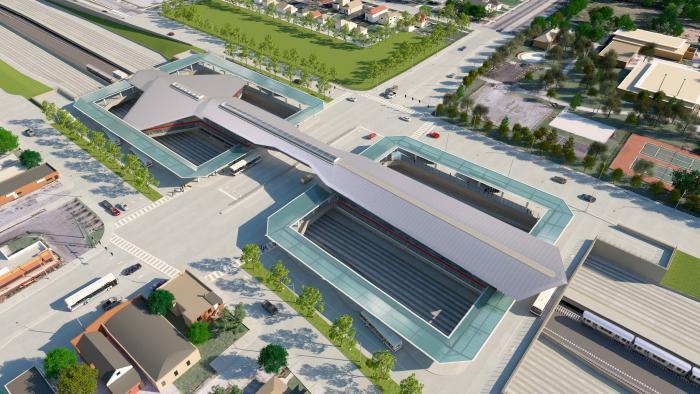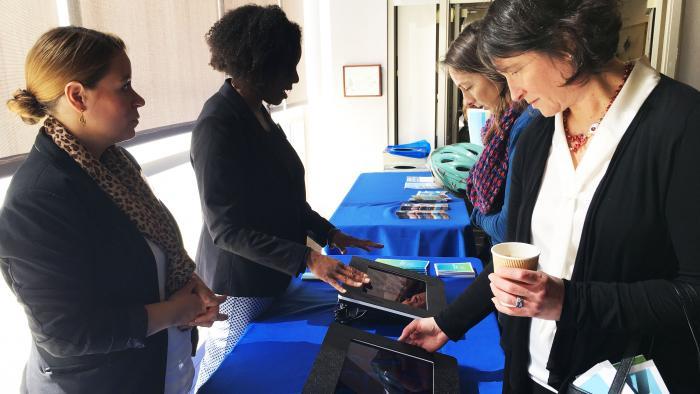Self-driving cars, shuttles that come to your door with the click of a button, designated bicycle lanes along every street—these are just a few of the alternative futures the Chicago Metropolitan Agency for Planning is asking residents to consider this spring and summer as part of its On To 2050 initiative.
A new topic will be highlighted each month through August. In April, residents were asked to weigh in on climate change. This month, it’s walkable communities—those in which amenities are accessible by foot, eliminating the need for any type of motorized transportation.
Other topics include innovative transportation, constrained resources and transformed economy.
CMAP will conduct online surveys, show videos and hold workshops and forums to get people weighing in on each category. Since the launch of the initiative last month, more than 6,000 responses have been recorded at about 25 CMAP kiosks across the area.
“We’re helping organize goals for the long-term future, and it gets people to think about priorities,” said Melissa Silverberg, a communications associate at CMAP.
Kristin Ihnchak, a principal planner of On To 2050, likened the initiative to Daniel Burnham’s 1909 Plan of Chicago, an ambitious blueprint to transform the city, including the creation of a highway system.
“This detailed guidance can enable the city to move forward with action and implementation,” she said.
Under the innovative transportation category—which will be the focus in June—the agency is posing questions such as: What mode of transportation would you take if price wasn’t a factor? What motivates you to use buses and trains? And: Where would you live if transportation technology could provide a convenient commute from any location?
It also asks residents to consider some of the consequences new technologies are expected to have on the transportation sector, including high costs that could create greater disparities in access and expand gaps in income.
“We’re making sure that we connect the engagement effort to current trends to help people envision how they may continue and how potential problems can come up,” said Silverberg.
The next stages of the project include creating a financial plan and cross-tabulating responses to determine which combination of the alternative futures has the highest potential to positively impact the region. The final report will come out in late 2018 and will outline specific initiatives that will enable the region to realize one of the alternative futures, Silverberg said.
In an interview about Go to 2050 on Chicago Tonight last February, CMAP executive director Joseph Szabo said the project requires working collectively across city and suburban boundaries.
“This is the time for big ideas,” Szabo said.
Find information about upcoming workshops and a map of kiosk locations—which will move across the region—on the On To 2050 website.
Related stories:
 Chicago ‘Dooring’ Reports Saw Steep Increase in 2015, Data Shows
Chicago ‘Dooring’ Reports Saw Steep Increase in 2015, Data Shows
April 21: Crash data for 2015 released by the Illinois Department of Transportation shows a rise in the number of reported “doorings” in Chicago – collisions that occur when the door of a parked vehicle is opened directly in the path of an oncoming cyclist.
 Chicago Highlighted as the US Railroad Capital by Trains Magazine
Chicago Highlighted as the US Railroad Capital by Trains Magazine
Feb. 23: Editors from Trains Magazine tell us why Chicago is America's railroad capital.
 Next Grand Plan for Chicago to Start Taking Shape
Next Grand Plan for Chicago to Start Taking Shape
Feb. 23, 2016: Would you pay a toll to zoom past traffic in an express lane on the Stevenson? That's one of the big ideas the Chicago Metropolitan Agency for Planning has for the Chicago region. Geoffrey Baer has an exclusive look at their newest plan.






